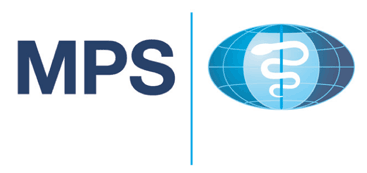Learning from our mistakes:Incident reporting
Kate Taylor
Kate Taylor
RN
Clinical Risk Manager, Medical Protection Society
Kate Taylor, a registered nurse and clinical risk manager at MPS, explores the concept of why we make mistakes and our responsibilities following an incident
As nurses, we have professional responsibilities to protect patients from harm and to report when things have gone wrong, often referred to as incident reporting.1 General practice teams also have a responsibility to report incidents which harm patients or staff to the Care Quality Commission (CQC) or the National Reporting and Learning System (NRLS) (regulation 18) for General Practice.2
Reporting of incidents has proved to be a useful tool in preventing error in other particularly high risk industries, such as aviation and nuclear industries. All GP practices are now familiar with the reporting of significant events, but what about those other incidents that we could learn from. Do we always report these as we should, or are we missing a learning opportunity?
WHY DO WE MAKE MISTAKES?
Over the years there has been research into exploring why we make mistakes. Psychologist, James Reason,3 describes the defensive systems in place in many fields of activity as like a Swiss cheese – ideally they would be intact, but in reality are full of holes. His model describes two approaches to the problem of human error, one involving the person and the other, the system. Human factors can include:
- Fatigue
- Hunger – long lapses between food/drink
- Lack of concentration
- Interruptions
- Distractions
- Lack of training
- Lack of information
- Unfamiliarity with place of work, for example, using a different consultation room
- Other i.e. illness, influence of drugs, alcohol, etc.
The other approach is the systems, which – when effective – will help to maintain standards and provide consistency. General practice teams need to develop systems to help different individuals achieve the same outcome through following an identical process. The majority of errors are thought to be due to system failure, which is often due to an inadequate system or a failure of individuals to follow the system, for example due to lack of training.
A well designed system will include error traps so that even if an individual does make an error, it will be trapped by the system and prevented from resulting in an adverse event.
INCIDENT REPORTING
Terminology relating to incident reporting can often be confusing and misleading, with incidents being referred to as critical events, untoward incidents, adverse events and ‘near misses’. Near misses are a situation in which an error or another form of patient safety incident was narrowly averted, such as noticing the potential for the wrong drug to be given to a patient. These are often referred to as free lessons and practice teams should be encouraged to report and learn from these. Critical events are not commonly reported in healthcare practice, which may be due to fear of blame. Some examples within general practice may include:
- Administering the wrong childhood vaccination
- Prescribing the wrong strength of drug
- Documenting into the wrong patient’s record
- Providing the wrong prescription
The National Patient Safety Agency published a guide for general practice teams to reinforce the need to learn from such incidents, identifying seven key steps to patient safety, as follows:
- Build a safety culture by creating a culture that is open and fair
- Lead and support staff by establishing a clear and strong focus on patient safety throughout the organisation
- Integrate risk management activity and develop systems and processes to manage risks and identify and assess things that could go wrong
- Promote reporting by ensuring staff can easily report incidents locally and nationally
- Involve and communicate with patients and the public by developing ways to communicate openly and listen to patients
- Learn and share safety lessons by encouraging staff to use root cause analysis to learn how and why incidents happen
- Implement solutions to prevent harm and embed these lessons through changes to practice, processes or systems.4
SIGNIFICANT EVENT ANALYSIS
Many practice nursing teams will regularly participate in practice Significant Event Analysis (SEA) meetings. SEAs are an integral part of modern clinical practice and help to demonstrate both reflective practice and a culture of openness.
The aims of an SEA are:
- To identify the factors that led to the incident and areas of good practice
- To establish how factors could be changed in order to prevent a similar occurrence in the future
- To implement any necessary changes (and reinforce areas of good practice)
- To assist in practice nurse appraisal and revalidation.
Conclusion
We are all human and susceptible to error; at some point in our careers we will make mistakes. The key to good risk management is to ensure that we learn from our mistakes and review systems and processes to try to reduce similar events occurring again.
REFERENCES
1. NMC (2008) The code: Standards of conduct, performance and ethics for nurses and midwives
2. Care Quality Commission http://www.opsi.gov.uk/si/si2009/uksi_20093112_en_4
3. Reason, James Human error: models and management. BMJ 2000;320:768–770.
4. NPSA (2009) Seven steps to patient safety in general practice. London.
Related articles
View all Articles

